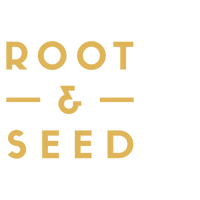How physical artifacts can bring love, joy and fulfillment no matter the monetary value.
Even in our disposable culture where we are more interested in experiences than things, the power of the physical to trigger memories, exemplify family values and stories and conjure up the very presence of a loved one is very real. When we asked our community for a singular item that means a great deal to them when wanting to connect back to their family and culture, the range was as incredible as the stories.
We heard of a large ornate framed mirror that has been passed down for generations and has traveled from North America to Australia to Amsterdam and back, a grandfather’s porcelain elephant that adorns a condo doorway as a sign of good luck, and even a Minhwa-style (Korean folk art) tattoo of a smoking tiger that is the embodiment of this person’s cultural journey and reclamation.
Could it be that the significance we attribute to items are more valuable than the items themselves? We met Sara, whose mother’s, mother-in-law’s and grandmother’s Shabbat candles are more about the passing on responsibility and pleasure of getting the family together for the holidays versus the value of the pieces themselves and that she takes great joy in thinking about giving the candles to her three children when they are ready. In her story we learned that the new family heirloom has the potential to be the experience in itself.
One of my most prized family possessions is a 500 rupee/$7 USD chunni (scarf) that I exchanged at the top of Vaishno Devi in India prior to getting married. I’ve used that chunni at all ceremonies and special occasions since and while my mom had done the same pilgrimage with her mom, I often wonder if that tradition ended with me? Or could it be replaced by a version of it that is contemporized and fits my daughter’s values, priorities and the time.
When our friend Paula’s grandmother passed away recently, she received a few pieces of her jewelry to keep in her memory. Paula immediately noticed the fact that the jewelry was well worn and memories of her grandmother wearing it while washing dishes, cleaning and organizing the kitchen flooded back. Instead of polished and fixing the jewelry or keeping these pieces in a safety deposit box or drawer, Paula has committed to wearing them often as is, with a renewed sense of pride and honour in her grandmother’s memory. She said “The dents become memories, the cracked stones became pieces of my heart and I realized that the rings, earrings, necklace are meant to be worn again, enjoyed, just like life”
With the digital age upon us, the potential for range in the traditional definition of heirlooms is expanding and growing. Older, more traditional items are more about the stories than the monetary value and new items like tattoos are all about the narrative, significance and connection. If you have a story about family heirlooms to share, we’d love to hear from you.









